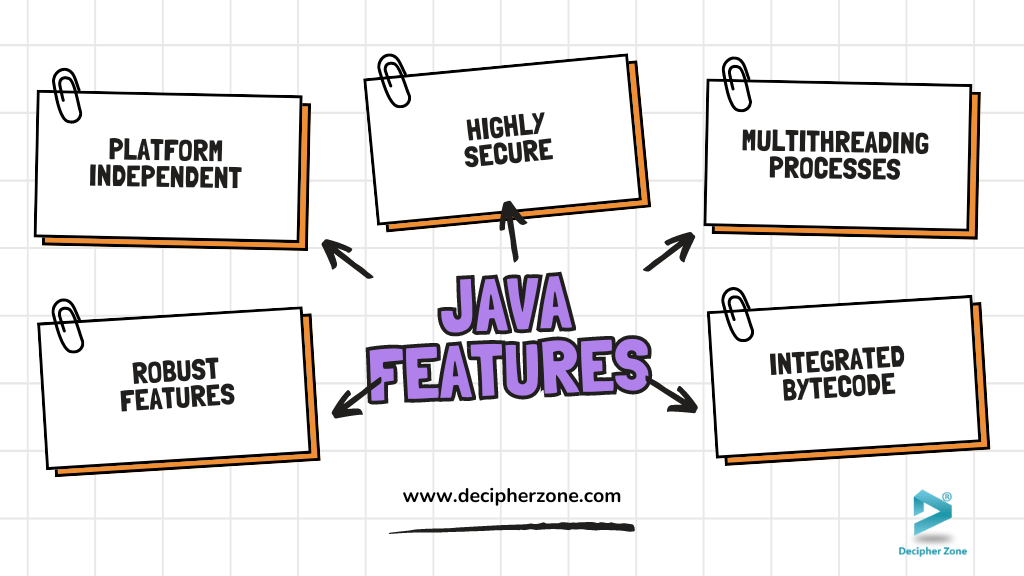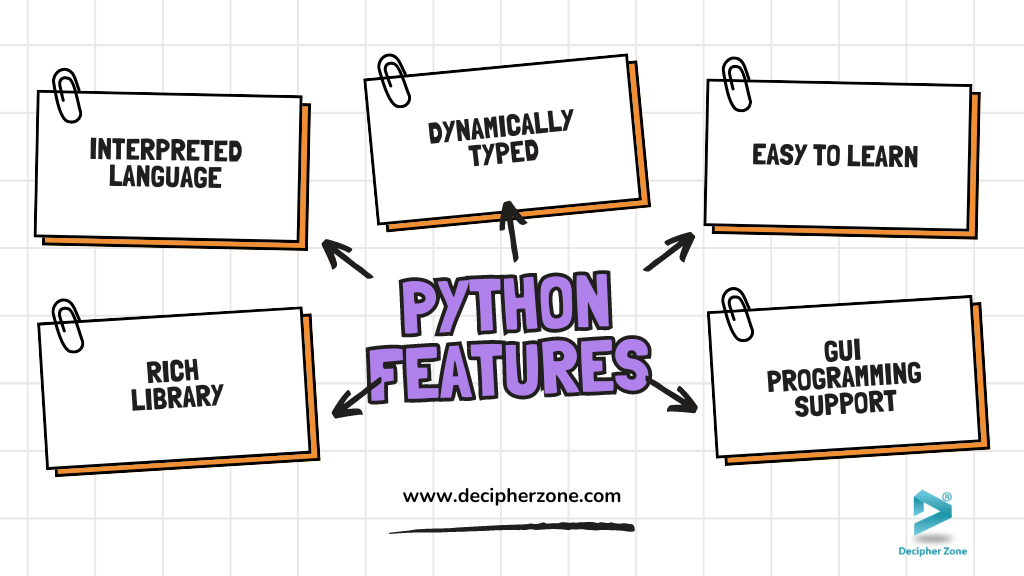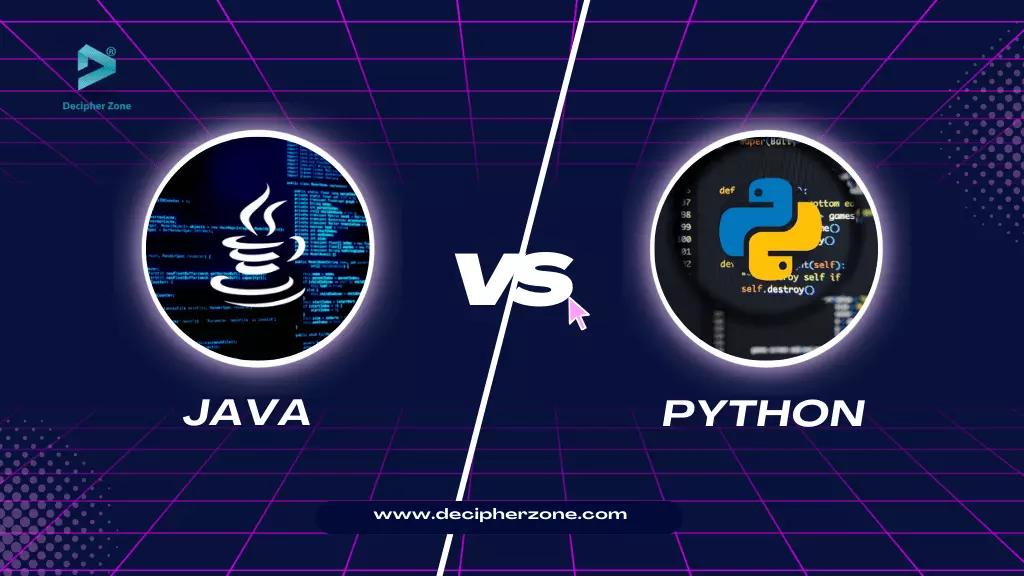The difference between Java and Python that will make it easier for you to make an informed decision for your next project. Java and Python both are popular backend languages used by developers for creating interactive, rich, and robust applications. But choosing one among these two can be difficult if you are new to the software development industry
The software industry has been shaped by the presence of Java and Python, two powerful programming languages that have been in use for over three decades. Their widespread adoption has resulted in millions of developers leveraging these languages to create robust, platform-independent, and scalable software solutions.
Java vs Python: A Detailed Comparison of the Features, Capabilities, and Use Cases
To aid in making an informed decision, we will provide a comprehensive comparison of the features, capabilities, and use cases of both Java and Python. This will help in understanding how each language can contribute to the success of software development projects.
Java, known for its speed, and Python known for its ease of learning, have been engaged in a notable rivalry. Each language possesses unique strengths that cater to different aspects of project development.
When it comes to building software, choosing the right programming language is crucial for developers and businesses. It's essential to select a language that aligns with the specific requirements of the project.
Read: What are Collections in Java and API Algorithms?
Java vs Python: Definitions
Before diving into other important details, let's first explore the definitions of Java and Python.
Java: Java is a powerful, high-level, object-oriented programming language with a class-based structure. It was created in 1995 by Sun Microsystems and was subsequently purchased by Oracle. One of the main objectives behind the creation of Java was to enable developers to write code once and run it on any platform. This network-centric language can run on multiple operating systems, making it a versatile and widely used tool in the world of software development.
Python: Python is an interpreted programming language that is also object-oriented, high-level, and general-purpose. It is known for its dynamic semantics and garbage collection. Python's syntax is easy to learn, and it offers a wide range of built-in data structures. Additionally, it is characterized by dynamic binding and typing, making it well-suited for rapid application development and as a scripting language for connecting existing components.
Java vs Python: Key Features
Now that we have a basic understanding of Java and Python, let's explore the key features of each of these programming languages.
Key Features of Java

-
Platform Independent:
Java follows the "write once, run anywhere" principle known as WORA. This principle enables developers to write code on any machine and run it on any other machine, regardless of their configurations. It achieves this through the Java Virtual Machine (JVM), which provides a layer of abstraction between the code and the underlying hardware. This approach offers tremendous flexibility and portability for software development, as it allows Java programs to be easily distributed and executed across different platforms without modification.
-
Highly Secure:
In today's constantly evolving landscape of cyber threats, businesses are continually seeking robust solutions for developing secure applications. Java plays a crucial role in this regard by providing a wide array of security features. From encryption and decryption to safeguarding data from unauthorized access, tampering, impersonation, and theft, Java equips developers with the tools they need to build resilient and secure applications in the face of growing cybersecurity challenges.
- Multithreaded:
Java is designed to make it easier to create applications that can run multiple threads simultaneously. This allows different operations or tasks to be processed simultaneously, which greatly enhances application performance by effectively managing tasks. Ultimately, this reduces overall software development time. Additionally, Java optimizes memory usage by utilizing shared memory slots for all the processes akin to individual ones.
-
Robust:
The robustness and capability of handling unexpected program terminations are well-known features of The Java Programming Language. Unlike low-level languages, Java has Exception Handling in place to prevent crashes. Java's memory management involves a runtime Garbage Collector provided by the JVM, which can automatically detect and eliminate unused variables, thereby freeing up memory space. This eliminates the necessity for manual memory allocation and deallocation and reduces the risk of program crashes due to insufficient memory.
-
Interpreted:
The Java compiler does not produce native machine code; instead, it generates bytecodes. When a Java program is executed, the compiled bytecodes are interpreted using the Java interpreter. Java bytecodes have a platform-independent object file format, allowing programs to be easily transported across different platforms. This design supports rapid development and offers security to software developers, as binary byte streams are downloaded rather than the source code.
Key Features of Python

-
Language Interpretation:
Python is an interpreted language, which means that its source code is executed line by line without the need for compilation before execution. This feature makes code debugging easier and faster, as developers can immediately see the results of each line of code as it is executed. This is particularly advantageous for beginners and experienced programmers alike, as it allows for quick identification and resolution of any errors or issues within the code.
-
Dynamically Typed:
Python is a dynamically typed language, which means that you don't have to specify the data type of a variable when defining it. The type of data assigned to a variable determines its data type at runtime. This flexibility allows for easier and faster development as you don't have to spend time explicitly specifying data types for variables.
-
Easy to Learn:
Python is designed with a limited set of keywords, simple and readable syntax, dynamic typing, and indentation-based block structuring instead of curly braces. These design choices make Python easier to learn and implement, especially for beginners who may find other programming languages more complex.
-
Rich Library:
Python boasts an extensive library of various modules and packages that provide support for a wide range of functionalities, including data compression, serialization, internet data handling, rendering rich text, and many other tasks that streamline the software development process for programmers. Some of its well-known modules comprise Tkinter for creating graphical user interfaces, Pandas for data manipulation and analysis, NumPy for numerical computing, Math for mathematical functions, and Matplotlib for creating visualizations and plots.
Read: How to Develop A Language Learning Application?
-
GUI Programming Support:
The Python standard library includes a powerful and versatile graphics library known as Tkinter. Tkinter enables developers to create sophisticated, user-friendly graphical user interfaces for their applications. It provides a wide range of tools and features for building intuitive and visually appealing UI components.
In addition to Tkinter, there are other popular GUI toolkits available for Python such as WxWidgets, PyQT, and PySimpleGUI. These toolkits are often initially developed in C/C++ and subsequently made accessible to Python developers, offering a variety of options for creating engaging and interactive user interfaces.
Java vs Python: Differences
While Java and Python are both object-oriented, general-purpose languages with strong community support, they have several differences. The following table will help you understand these differences easily.
|
Parameters |
Java |
Python |
|
Code |
Have lengthy code |
Have fewer lines of code |
|
Advantages |
Object-oriented, low-security risks, automated memory process, functional programming support. |
Open source, dynamically typed, portable, versatile, vast third-party modules, and rich library. |
|
Disadvantages |
Higher memory consumption, higher cost, less machine interface, and slow performance. |
Memory intensive, high runtime errors, no multithreading support, slow speed, unoptimized database access. |
|
Syntax |
Complex |
Easy to remember |
|
When to Use |
Game development, Cloud Apps, Artificial Intelligence, IoT, Big Data, Web Apps, Chatbots, Enterprise Apps, Mobile Apps, and Scientific Apps. |
Data Analysis, Machine Learning, Web Development, Automation, Scripting, Data Science, and Data Engineering. |
|
Learning Curve |
Difficult |
Easier |
|
App Performance & Stability |
Static and Fast |
Dynamic and Slow |
|
Database Support |
Stable Connectivity |
Weak Connectivity |
|
Architecture |
The Java compiler converts source code into bytecode, which is then interpreted or compiled into machine language code by the JVM to run on different platforms. |
Python doesn't directly convert its code into machine code. Instead, it converts it into bytecode (in .pyc or .pyo files), which requires a Python virtual machine to execute. |
|
Machine Learning |
Weka, Mallet, MOA, Deeplearning4j |
PyTorch, TensorFlow |

